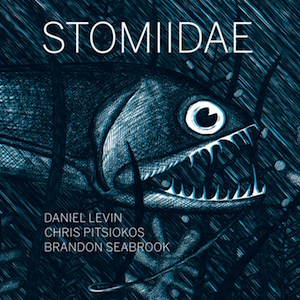Label: ECM, 2018
Personnel - Marc Sinan: guitar, electronics; Oguz Buyukberber: bass clarinet, clarinet, electronics.
White is a compelling duo record co-orchestrated by German-Turkish-Armenian guitarist Marc Sinan and Turkish clarinetist Oguz Buyukberber. Trading in the modern creative and electronic music, the artists create often spacious, occasionally knotty musical textures in their symbiotic emotional expressions.
The 5-part “Upon Nothingness” was written by Sinan with the exception of the ‘White’ module, an ominously depressive piece, heavy on electronics and probing loose string pluck effects, that was penned conjointly with Oguz. Based on field recordings of Armenian prisoners of war sent to detention camps in Germany during the WWI, the suite also comprises: ‘Yellow’, in which clarinet trills get involved with guitar arpeggios in an atypical intervallic allure, having cloud-covered electronics around; ‘Blue’, an odd dance whose electronic drones seek for a denser texture, some of them deeply noir; ‘Green’, an atmospheric exercise where distorted guitar strokes trigger some rock jolt along with some calculated string scraping and volume manipulation; and the closing ‘Red’, in which the partners, motivating each other, set up another experimental scenario filled with the recurrent vocal samples of Armenian chants in the background and a bit of white noise.
Also comprising five parts, There is credited to Oguz, who skillfully squeezes written material and improvisation over the same dish to improve taste. If “There I” thrives with guitar dissonances and rapid pointillism in response to the clarinetist’s sinuous lines before the unison final phrase, then “There II” is a bold exercise exhibiting parallelisms, staccatos, and counterpoint as part of an animated conversation.
Emitting a stable effulgence, “There III” and “There V” are free roams for solo clarinet and solo guitar, respectively. They fly in the face of “There IV”, which advances calmly with an air of blissful sorrow, later turned into rapid mutual staccatos to conclude.
With an underlying feeling of abandonment allied to a solid improvisational compatibility, the pair, besides technically strong, is also very capable when it comes to electronic choices. The result is a bountiful creative freedom.
Grade B+
Favorite Tracks:
01 - Upon Nothingness, Yellow ► 04 - There II ► 05 - Upon Nothingness, Green








































